PT: Practice Transformation
The MAAETC Practice Transformation (PT) Program has identifies qualified clinical sites across the region, conducts comprehensive initial assessments, provides written reports to clinical leadership, and develops targeted intervention plans. PT coaches engage in ongoing bi-weekly meetings, and all PT coaches, coordinators, and the Principal Investigator have participated in national PT Coaches Training events and webinars hosted by the AETC National Coordinating Resource Center (NCRC). The status and outcomes of the MAAETC PT initiative are shared widely through regional presentations and national webinars, including with the AETC PT Community of Learning.
1. Comprehensive Training Approach
The PT model employs a structured yet flexible approach that includes:
-
In-depth site assessments
-
Joint identification of issues and priorities
-
Action planning, implementation, monitoring, and evaluation
Interventions are interactive, case-based, and problem-focused, delivered through a mix of onsite preceptorships, one-on-one sessions, and distance-based technical assistance (TA). A key component of the initiative is the creation of “communities of practice” within and among participating clinics to collectively improve performance across the HIV Care Continuum.
The MAAETC has developed a tailored capacity-building process that is iterative and responsive—not linear. The process adapts to the evolving needs of each clinic and includes the use of custom-developed tools and forms.
Key Steps in the PT Process Include:
-
Clinic engagement: Securing agreement from leadership and identifying internal champions.
-
Needs assessment: Conducting onsite evaluations using standardized MAAETC instruments to establish rapport and gather baseline data.
-
Summary report: Synthesizing findings into a “Summary Report” for clinic review and input.
-
Collaborative review: Hosting in-person meetings with clinic teams to finalize findings and recommendations.
-
Goal setting: Co-developing a “Goal Setting Form” to guide interventions.
-
Implementation: Launching training and TA aligned with the goal-setting plan.
-
Documentation and tracking: Maintaining detailed records of interventions, time, and progress. To better capture the intensity of PT efforts, MAAETC developed a “PT Acuity Documentation Form”
-
Integration of models: Embedding patient-centered medical home principles, HIV care, and behavioral health across all training modalities.
-
Continuous quality improvement: Adapting strategies based on data reviews, clinic feedback, and CQI principles to optimize team dynamics, patient flow, clinical priorities, and outcomes.
To date, eight PT sites have been identified and engaged, with plans to expand over the five-year period. These sites—comprised of Ryan White Part A and B-funded FQHCs, community hospitals, and clinics co-located with behavioral health services—represent a diverse range of high-need clinical settings. PT interventions at these sites aim to:
-
Enhance clinical competencies
-
Expand access to the full spectrum of HIV services
-
Strengthen care coordination
-
Improve patient outcomes as measured along the HIV Care Continuum
2. Access and Use of Clinical and Support Services Data
All participating PT clinics use electronic health records (EHRs) and comply with HRSA’s Uniform Data System (UDS) requirements. Many also maintain Ryan White Services Report (RSR) data. De-identified, aggregate patient data will be shared electronically to ensure HIPAA-compliant performance monitoring.
This data enables MAAETC to evaluate intervention effectiveness using standardized tools drawn from our core programming, including:
-
Core-IP
-
TA follow-up assessments
-
PT Acuity Documentation Form (PT ADF)
These tools support evidence-based refinements to TA delivery and help measure transformation impact across participating clinics.
3. Maintaining Longitudinal Relationships
To ensure sustainability and lasting impact, each PT site maintains regularly scheduled standing meetings with a dedicated MAAETC PT interventionist. These sessions foster continuity, provide a platform for real-time feedback, and facilitate open communication among all members of the care team.
This model:
-
Supports honest dialogue about barriers and facilitators
-
Reinforces MAAETC’s role as a reliable training and TA resource
-
Strengthens provider confidence and organizational trust
-
Lays the foundation for long-term, collaborative partnerships



